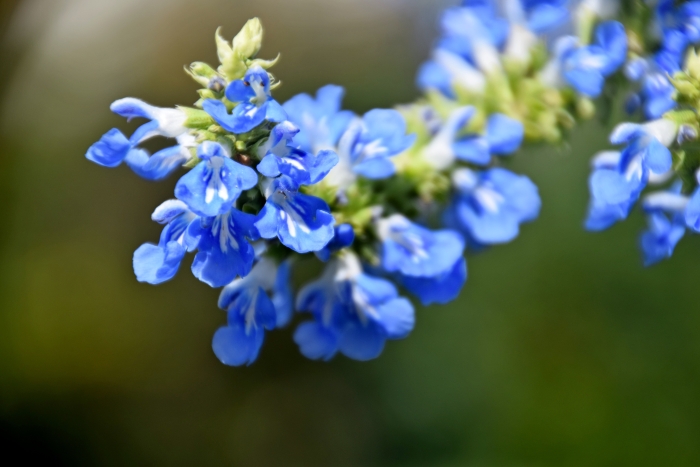Bog Sage
(Salvia uliginosa)
Bog Sage (Salvia uliginosa)
/
/

Krzysztof Golik
CC BY-SA 4.0
Image By:
Krzysztof Golik
Recorded By:
Copyright:
CC BY-SA 4.0
Copyright Notice:
Photo by: Krzysztof Golik | License Type: CC BY-SA 4.0 | License URL: https://creativecommons.org/licenses/by-sa/4.0 | Uploader: Tournasol7 | Publisher: Wikimedia Commons | Title: Salvia_uliginosa_in_Jardin_des_Plantes_de_Toulouse_06.jpg | Notes: pattypan 22.03 |
























Estimated Native Range
Summary
Salvia uliginosa, commonly known as Bog Sage, is a deciduous perennial herb native to the wetlands and riparian zones of South America, particularly in Brazil, Uruguay, and Argentina. It can grow rapidly to a height of 3 to 6 feet (0.91 to 1.83 m) in one season, with multiple slender stems and yellow-green lance-shaped leaves that feature serrated margins. The plant is known for its ability to spread quickly through underground runners and can be easily propagated by division. The striking azure-blue flowers are about 0.5 inches (1.3 cm) long and display a white "beeline" in the throat, which guides pollinators to the nectar and pollen. These blooms are arranged in whorls and create a showy display from summer to fall, with many flowers opening simultaneously. Introduced into horticulture in 1912, Bog Sage has gained popularity for its vibrant blue flowers, adaptability to various growing conditions, and value as a habitat for pollinators.
In cultivation, Bog Sage is valued for its bright blue flowers and ability to attract bees and butterflies, making it an excellent choice for pollinator gardens. It is also used in borders, naturalized areas, and water garden margins. This plant thrives in full sun to part shade and prefers moist to wet soils with good drainage. While it is adaptable to different soil types, it performs best in rich, loamy soils. Gardeners should be aware that Salvia uliginosa can be potentially invasive due to its spreading habit, so it is important to manage its growth and be cautious about planting it in areas where it may escape cultivation.CC BY-SA 4.0
In cultivation, Bog Sage is valued for its bright blue flowers and ability to attract bees and butterflies, making it an excellent choice for pollinator gardens. It is also used in borders, naturalized areas, and water garden margins. This plant thrives in full sun to part shade and prefers moist to wet soils with good drainage. While it is adaptable to different soil types, it performs best in rich, loamy soils. Gardeners should be aware that Salvia uliginosa can be potentially invasive due to its spreading habit, so it is important to manage its growth and be cautious about planting it in areas where it may escape cultivation.CC BY-SA 4.0
Plant Description
- Plant Type: Herb
- Height: 4-6 feet
- Width: 4-6 feet
- Growth Rate: Rapid
- Flower Color: Blue
- Flowering Season: Summer, Fall
- Leaf Retention: Deciduous
Growth Requirements
- Sun: Full Sun, Part Shade
- Water: Medium
- Drainage: Medium
Common Uses
Bank Stabilization, Bee Garden, Bird Garden, Border Plant, Butterfly Garden, Deer Resistant, Drought Tolerant, Fragrant, Hummingbird Garden, Rabbit Resistant, Rock Garden, Salt Tolerant, Showy Flowers, Street Planting
Natural Habitat
Native to the wetlands and riparian zones of South America
Other Names
Common Names: Blue Spike Sage
Scientific Names: Salvia uliginosa , Salvia lanceolata , Salvia uliginosa var. rufescens
GBIF Accepted Name: Salvia uliginosa Benth.